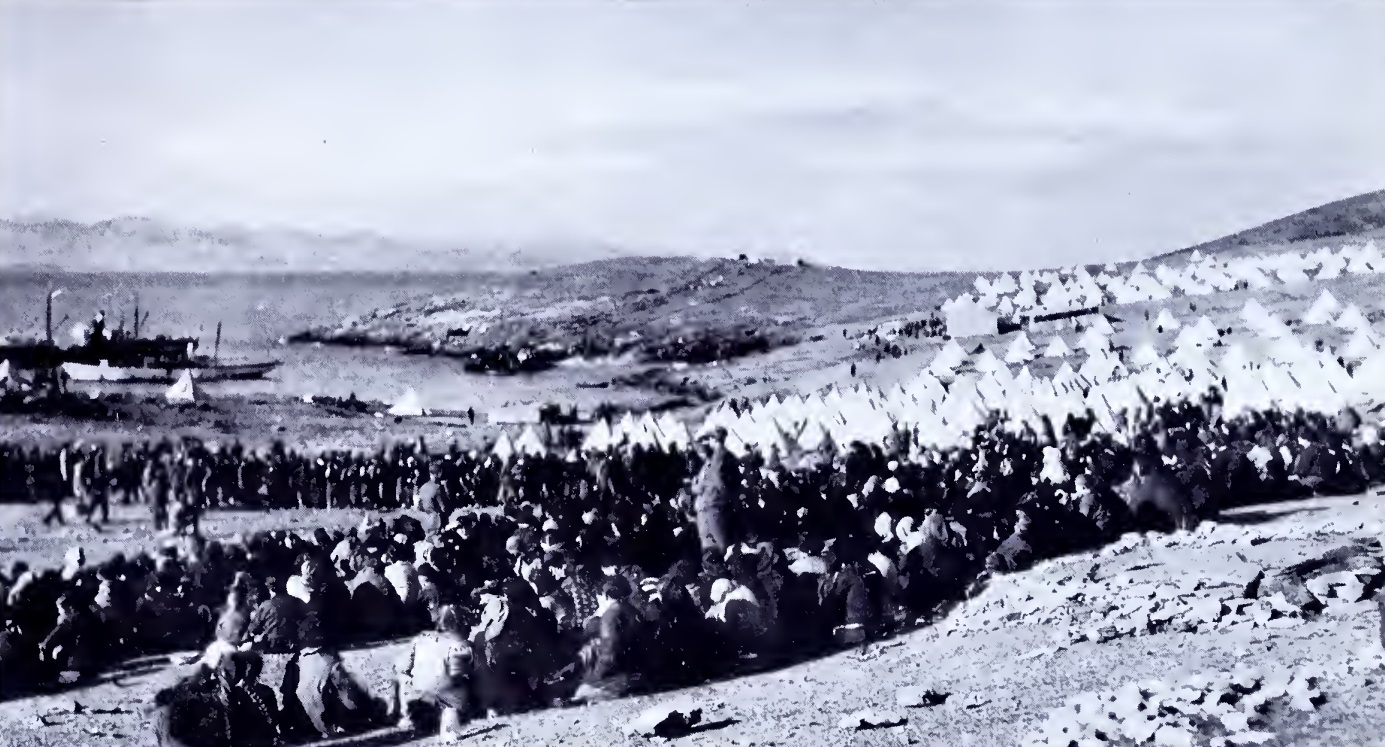
Six thousand refugees waiting for food, A.W.H. Quarantine Island. Source: Lovejoy, E. Certain Samaritans.New York 1927.
Following the Smyrna Holocaust in September 1922, hundreds of thousands of Ottoman Greeks fled Turkey in scenes of indescribable horror after witnessing the wholesale massacre of Greeks throughout Turkey by the victorious Kemalist forces. The massive influx of these refugees into Greece caused a humanitaran crisis and when ships began arriving from Turkey's Black sea ports at the end of 1922 with virtually all on board carrying disease, the Greek government halted arrivals due to a lack of quarantine facilities.
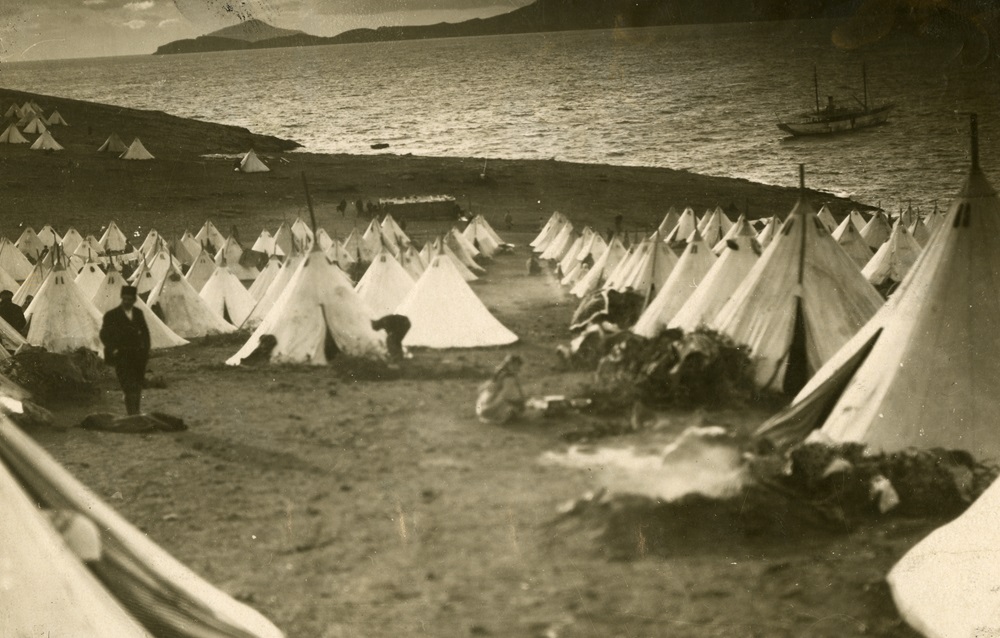
"Main Street" in one of the Macronissi tent cities. Macronissi Island, Greece 1923.
American Womens Hospitals records. Drexel University website
Greek authorities subsequently requested the American Women's Hospitals Service (AWHS) to establish a quarantine facility on the island of Macronissi which was situated about 10 km off the south coast of Greece.
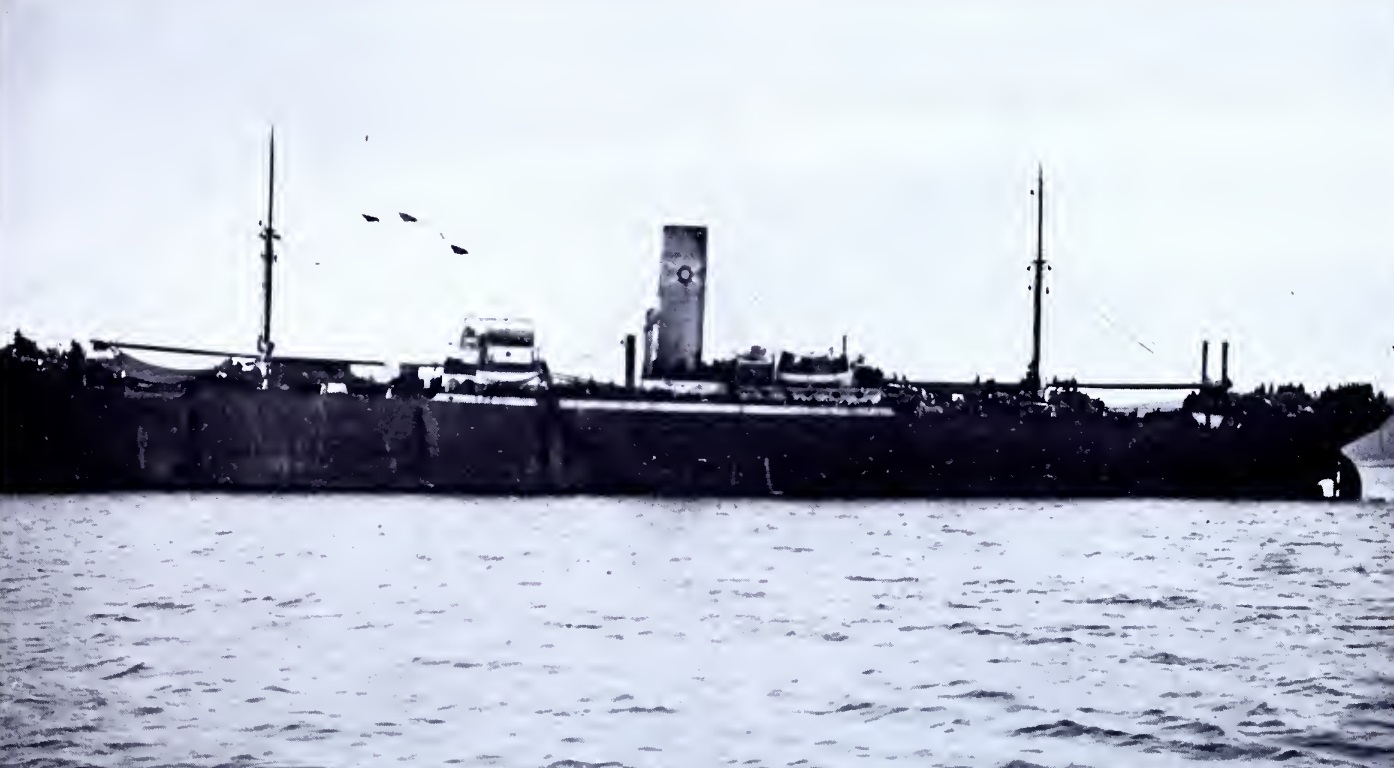
Pest ship with human cargo (four thousand refugees) from Trebizond, lying off the AWH Quarantine island, flying signals of distress, meaning: no water-no food-smallpox-typhus. Source: Certain Samaritans.
Macronissi was a barren and uninhabited rocky island about 11 miles long and 2 miles wide. The only facilities it had were a bath house and delousing plant which were in operation during World War 1. Tents, bedding, fuel, fresh water and food had to be shipped to the island and the delousing plant was put into operation.
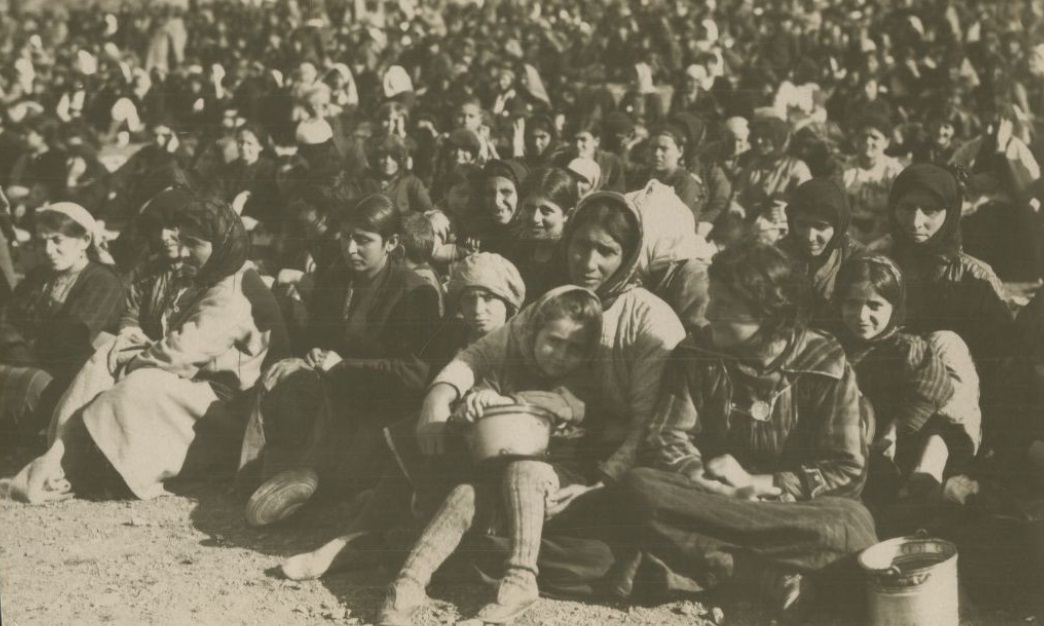
Waiting to be fed by the American Women's Hospitals, Island of Macronissi 1922. Source: The American Women’s Hospitals and the Fire of Smyrna. The Legacy Center, Drexel University College of Medicine Archives & Special Collections. Philadelphia, PA.
The AWHS initially funded and took responsibility for feeding and caring for the refugees while the Greek Government bore the cost of water, fuel and transportation. The American Red Cross later helped with supplying food. Up to 8,000 refugees were on the island at one time. The people tranferred to the island were mostly women, children and the elderly.
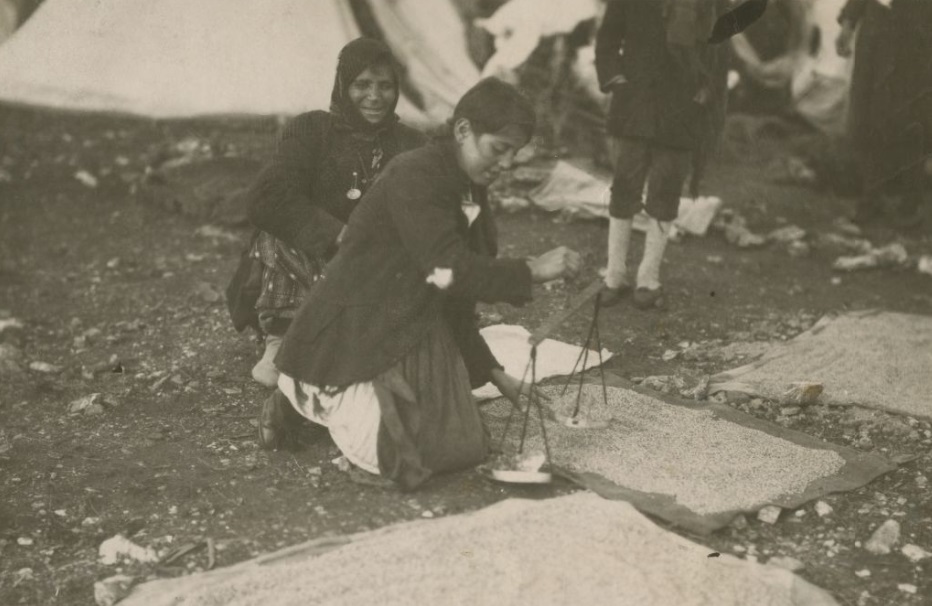
Weighing out the daily allowance of food.
Source: Drexel University College of Medicine Archives & Special Collections.
The first ships to arrive were carrying Greeks from different ports along the Black sea coastline of Turkey. The medical staff called them "pest ships" since a large proportion of those onboard were carrying disease. A considerable number of those sent to Macronissi died soon after landing and were buried in a makeshift cemetery. Most died of exhaustion and disease caused by the arduous journey. They'd been crammed on ships without food and water for days while typhus and smallpox raged on board. Many, in particular children, died while at sea and were thrown overboard. With their lungs full of air, they would often float for long periods, a distressing site witnessed by those on board and AWHS staff.
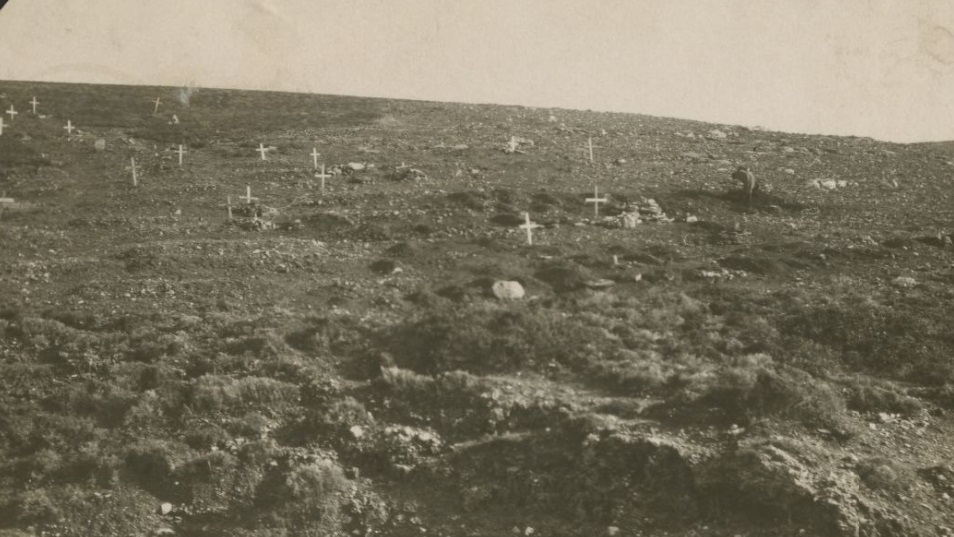
Τhe Cemetery on Macronissi Island. Each cross tells a story of suffering. From the extreme edge of the camp at dusk the white crosses stand out like little stars. At the right of the picture is dimly seen the figure of the gravedigger at work. Source: Drexel University College of Medicine Archives & Special Collections.
The director of the AWHS, Dr. Esther Lovejoy inspected the island and recounted:
"The refugees came ashore in great flat scows, and Dr. Stastny, with assistance of Dr. Sara E. Foulks and Dr. Owen H. Yereman inspected them, one after another as they landed. The sick were given first attention. Some of them were insane, Those with contagious disorders were sent to the isolation hospitals, and the entire Ionia [ship] colony was located at a distance from the colonies arriving previously from different ports of the Pontus, with perhaps different kinds of diseases.
Mr H. C. Moffett, Dr. Elliott and I, stood on an elevation above the cove where the tenders were landing, and watched that tragic procession made up of women, children, the aged, and a small proportion of able-bodied men, struggling through the sand with their bundles on their backs. Many of the old people were exhausted, and had to be helped to the camp of the "unclean," where all the newcomers were obliged to remain until they were deloused and their meager belongings disinfected."
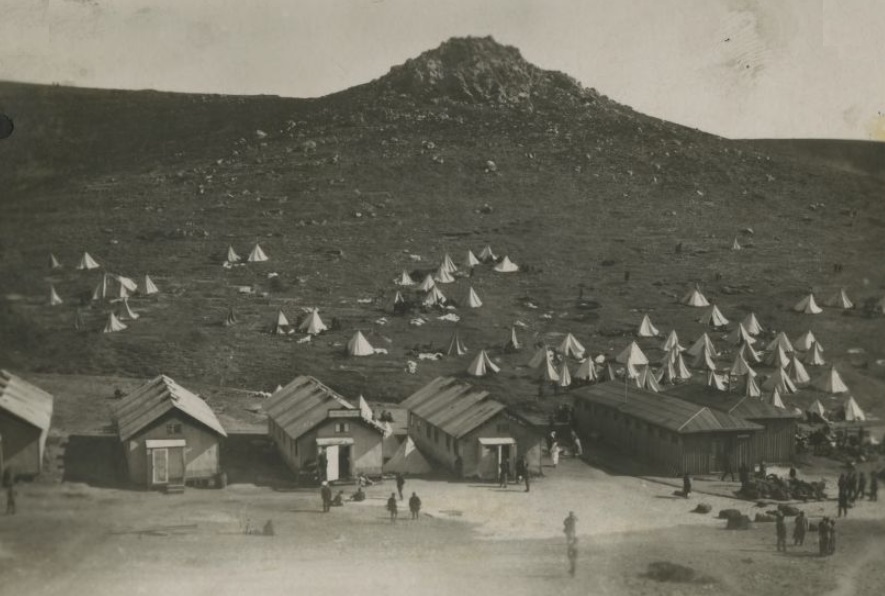
Hospital pavillions and disinfecting stations on Macronissi island.
American Women's Hospitals records, Drexel University Libraries online
In total, 12,295 refugees were received on the island and were kept from one to four months. They were all vaccinated, fed, clothed and finally transferred to mainland Greece.
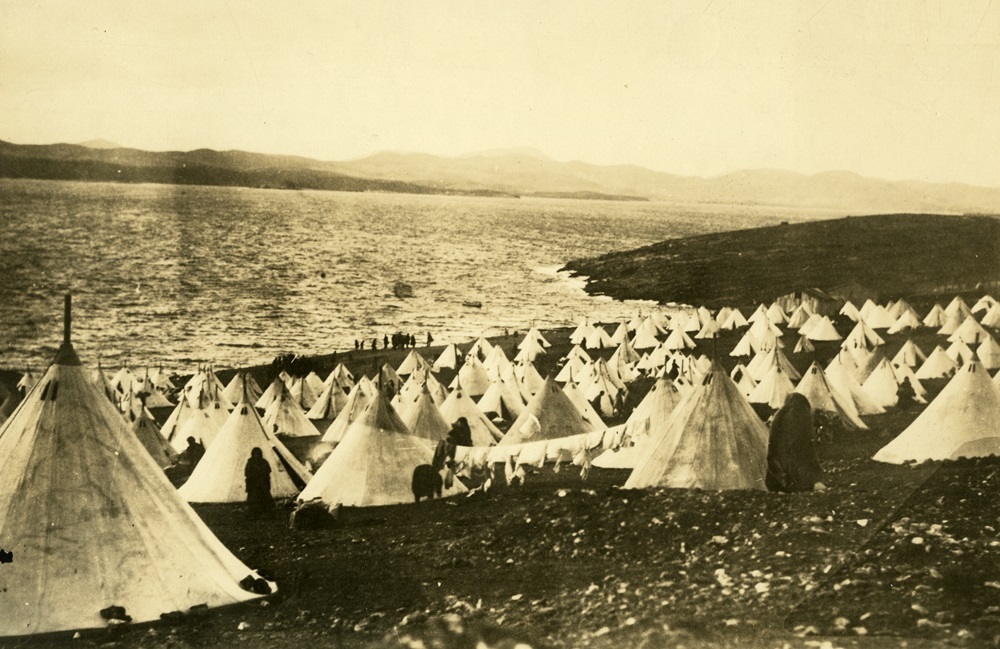
Macronissi AWH Quarantine Island, Greece 1923.
Source: Drexel University Libraries online.
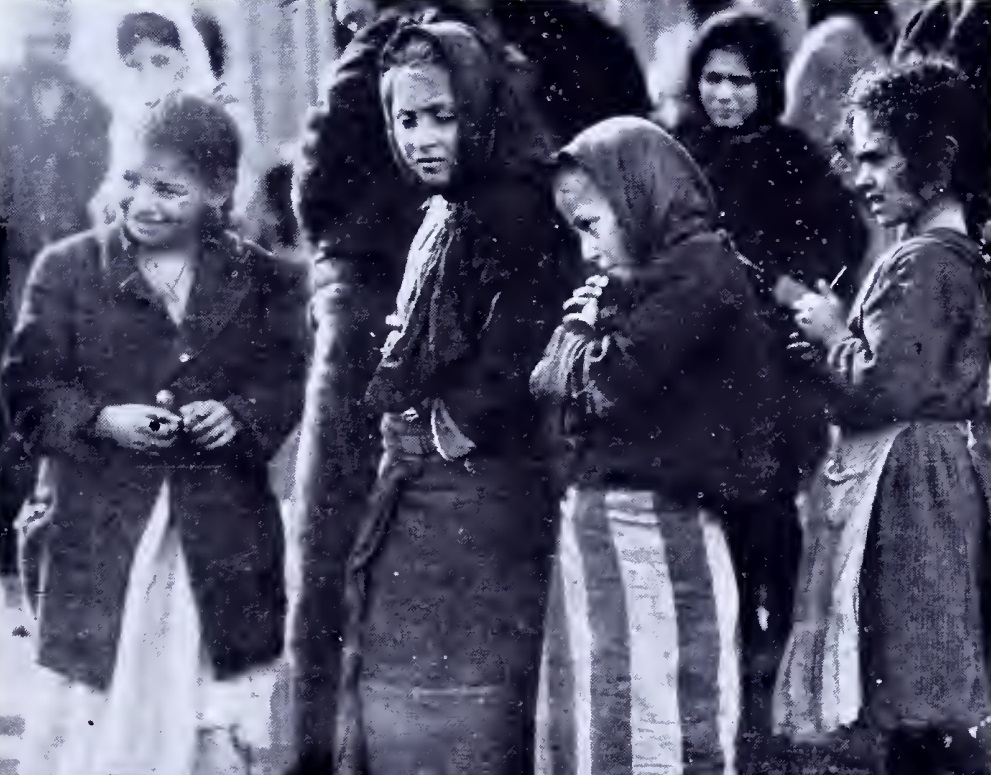
Detail of the breadline on the AWH Quarantine Island.
Source: Lovejoy, E. Certain Samaritans. New York 1927.
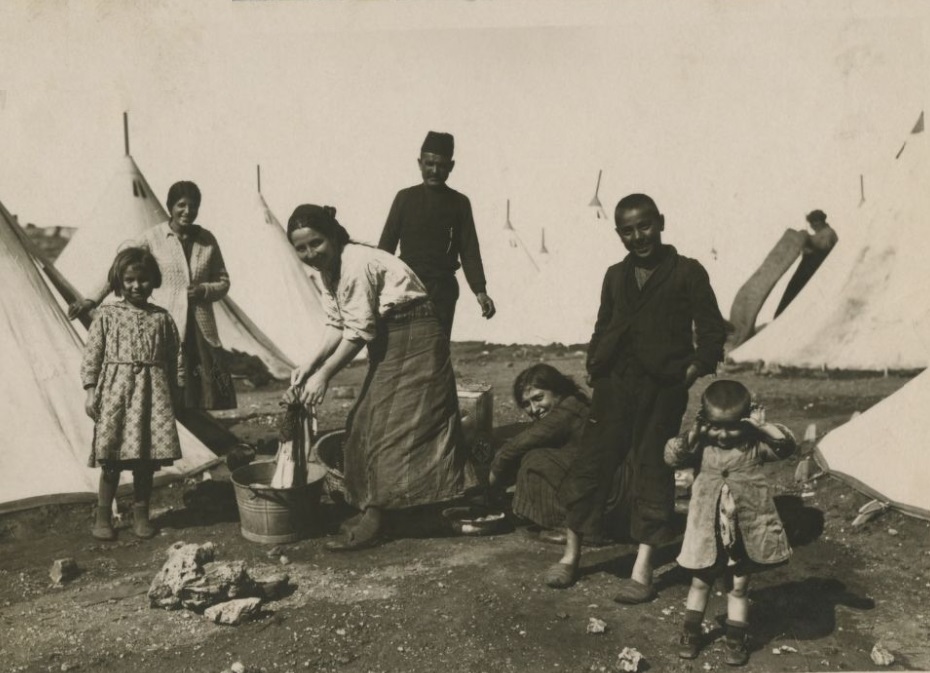
Complete family on the island of Macronissi.
Source: American Women's Hospitals records, Drexel University Libraries.
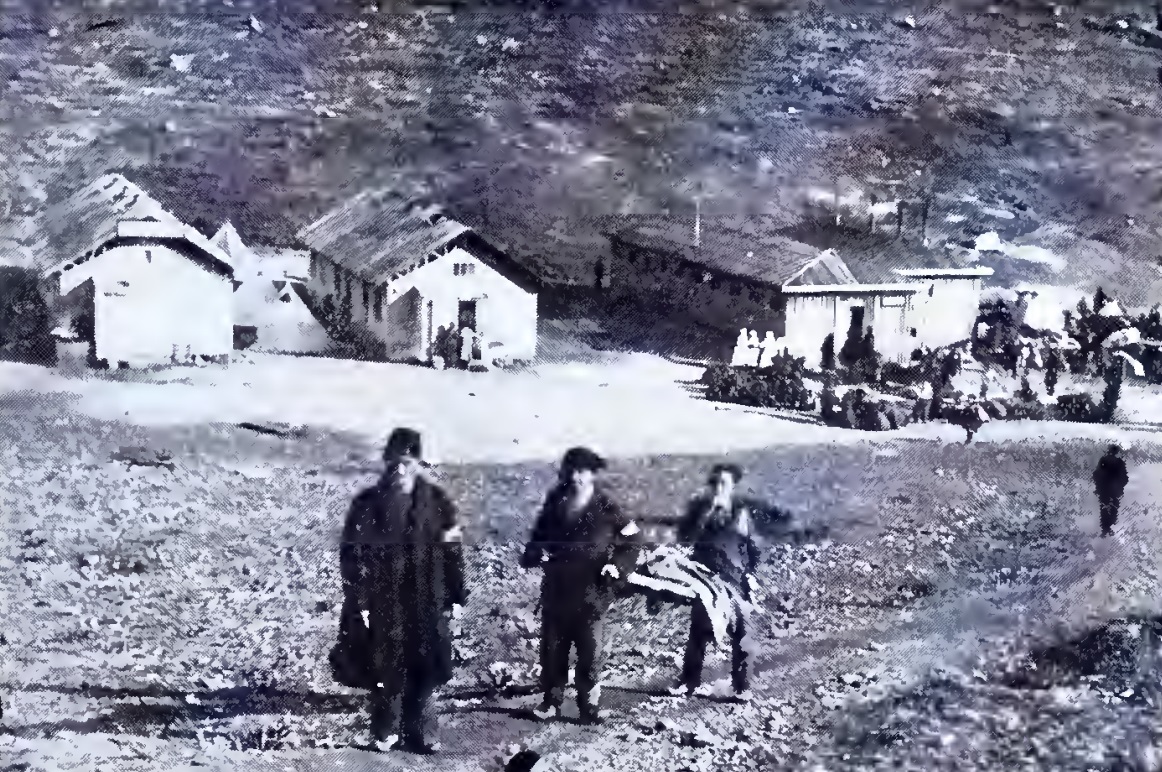
A funeral on Macronissi island. Disinfecting plant and barracks in the background. Source: Certain Samaritans.
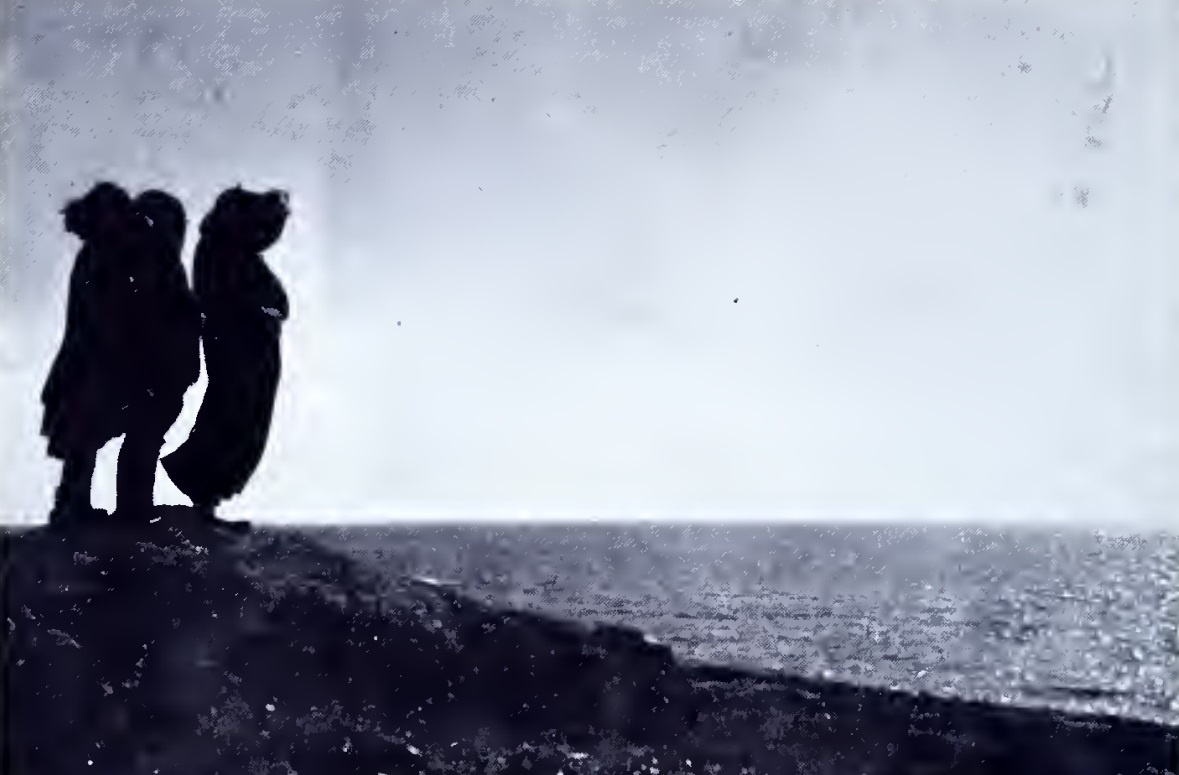
Looking over the sea from the AWH Quarantine island. Source: Certain Samaritans.
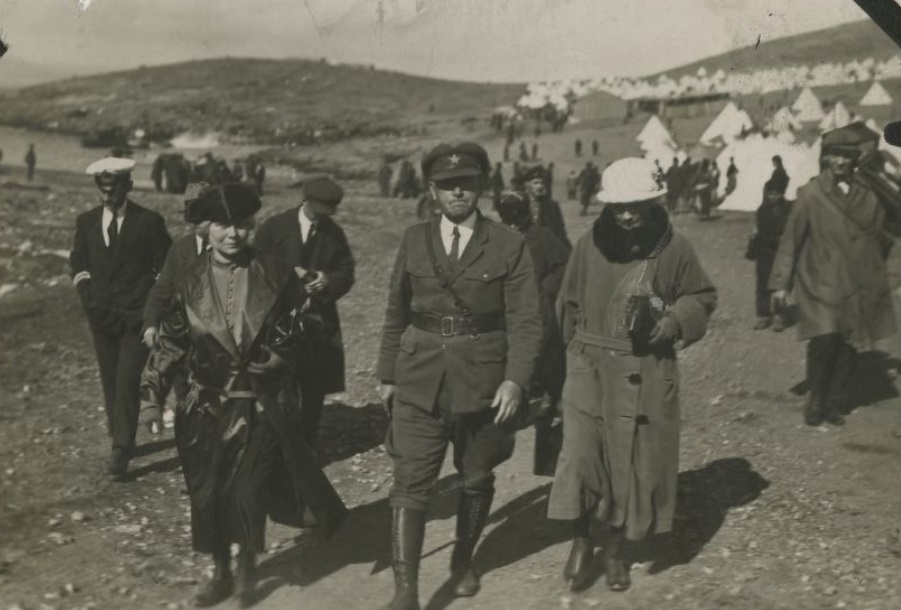
Dr. Lovejoy, Mr. Moffat, and Dr. Elliot at Macronissi.
Source: American Women's Hospitals Contributor. Katharine Boucot Sturgis, M.D. papers. Drexel University Libraries online.
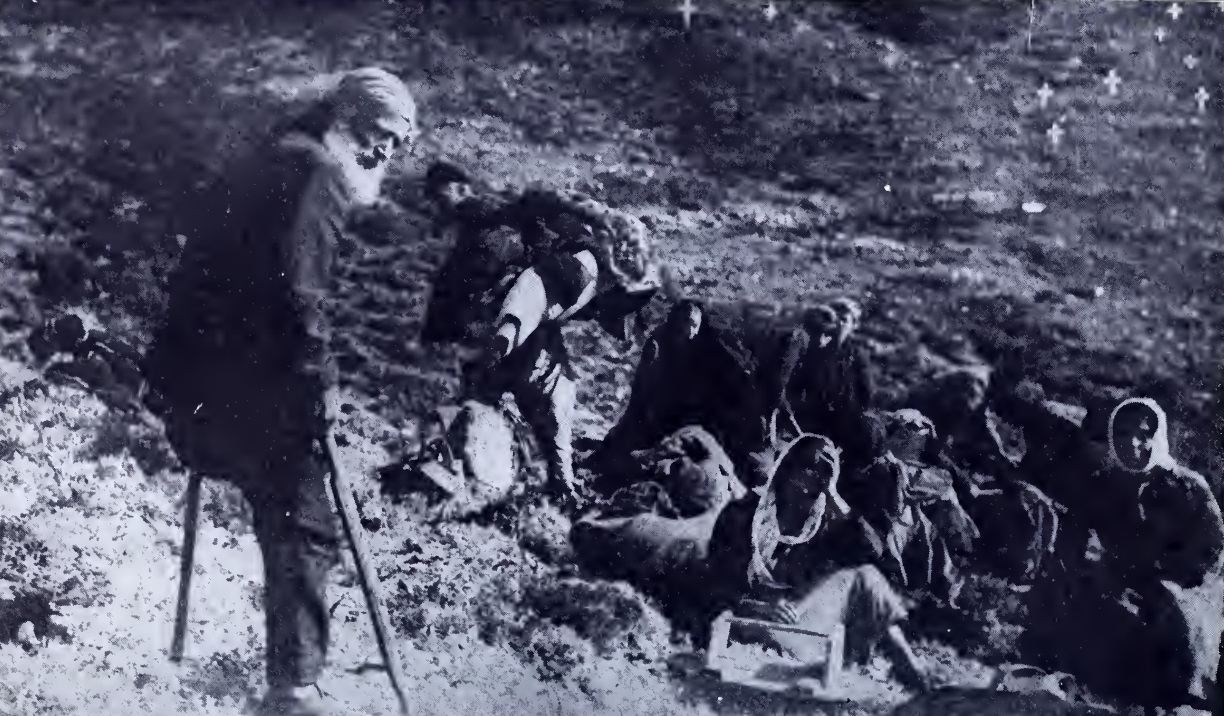
A man of sorrows with a saintly face moving toward the last resting place on wind swept macronissi. Source: Certain Samaritans.
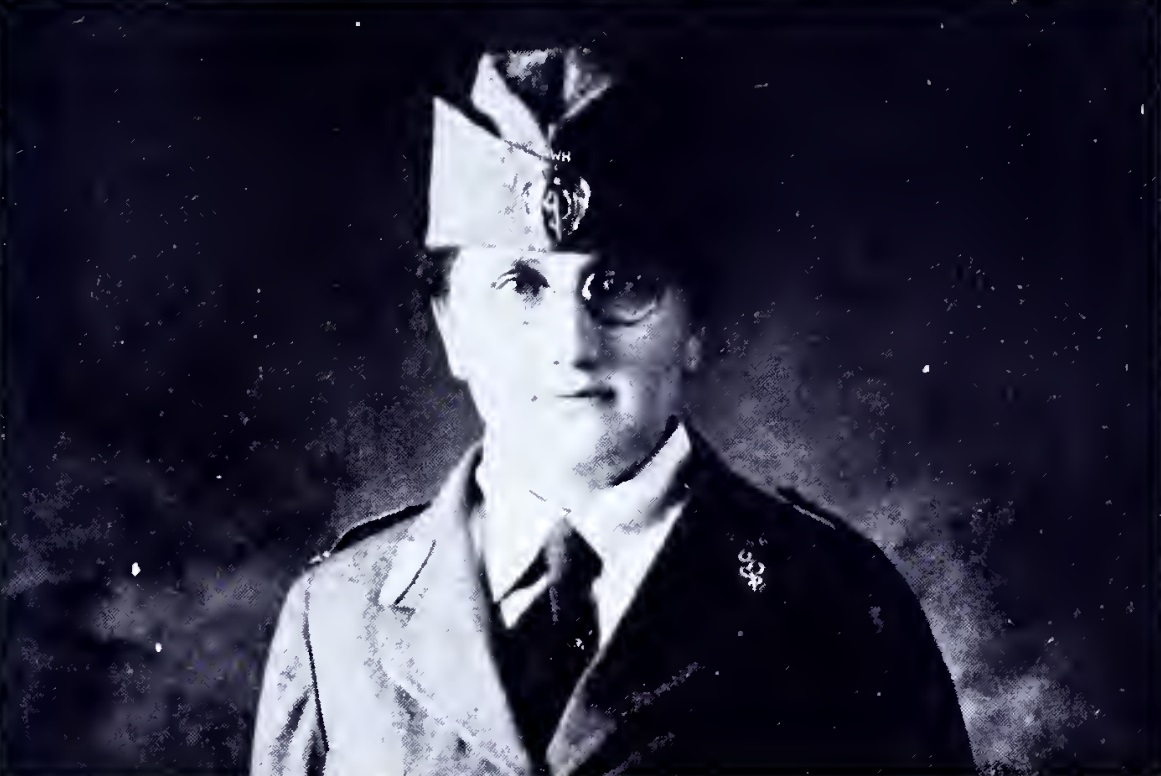
Dr. Olga Stastny, director of the AWH Quarantine Service, Macronissi Island, Greece 1923. Source: Certain Samaritans.
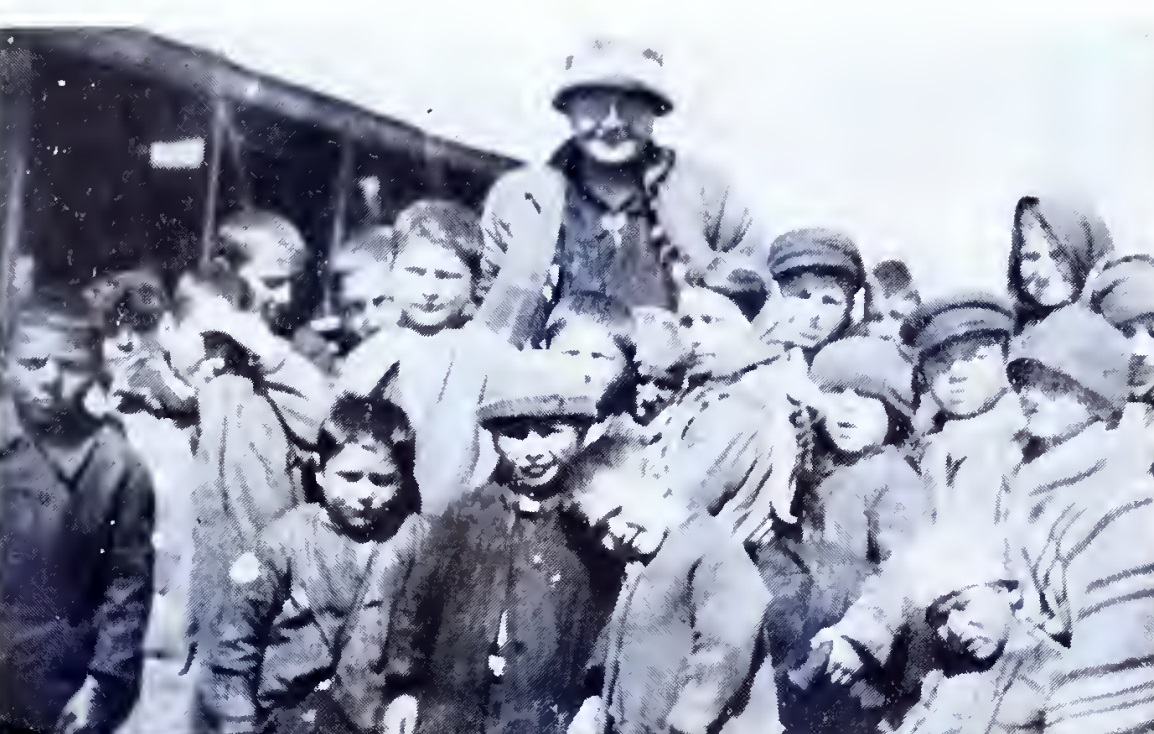
Dr. Olga Stastny with a group of "clean" children. These children have been deloused, washed and provided with vermin-free clothing. Source: Certain Samaritans.
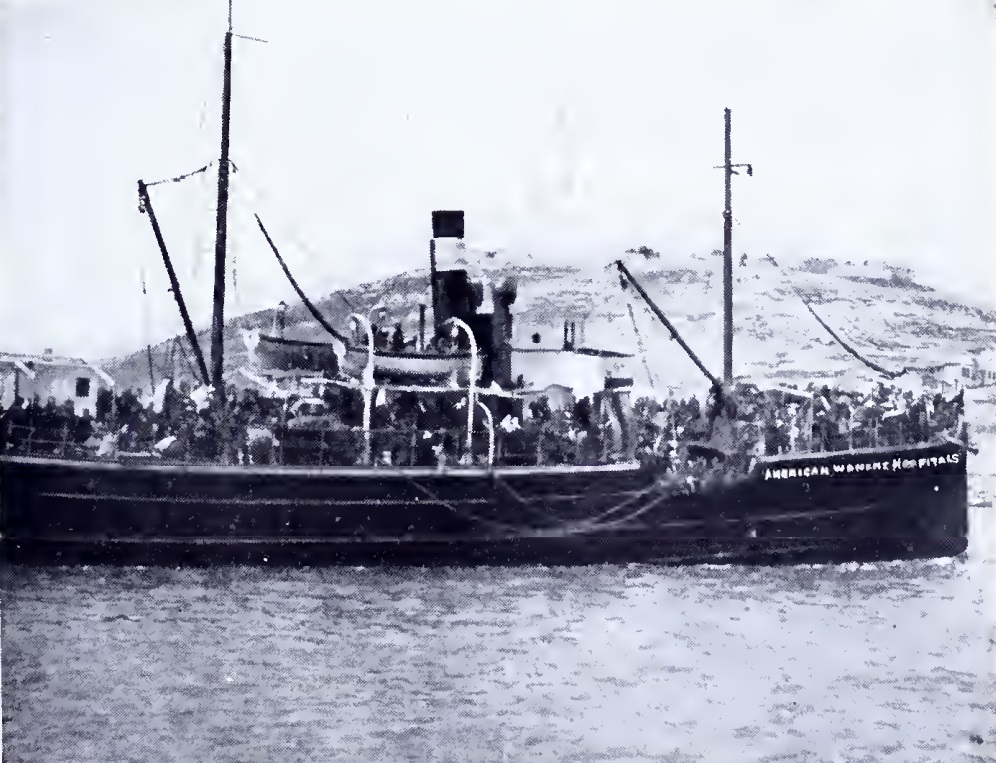
Tender provided by the Greek Government for the American Women's Hospitals, Quarantine Island. Source: Certain Samaritans.
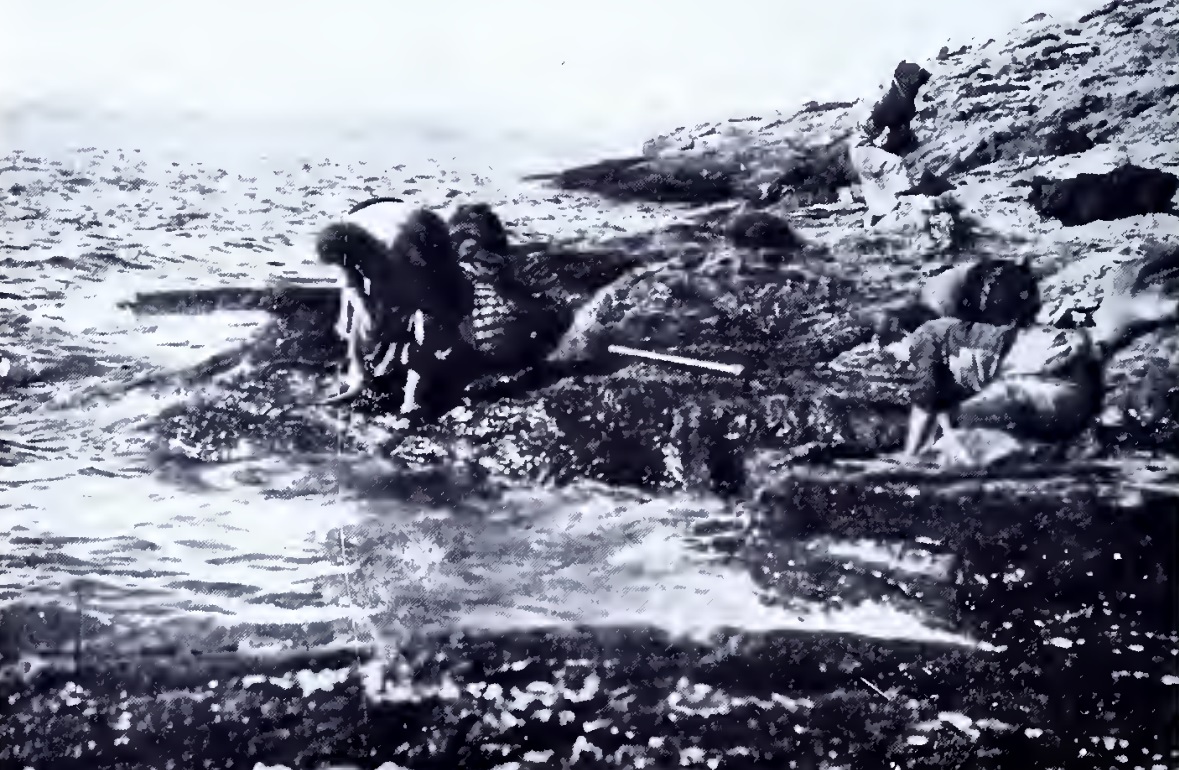
Refugee women on the island washing clothes in the sea. Source: Certain Samaritans.
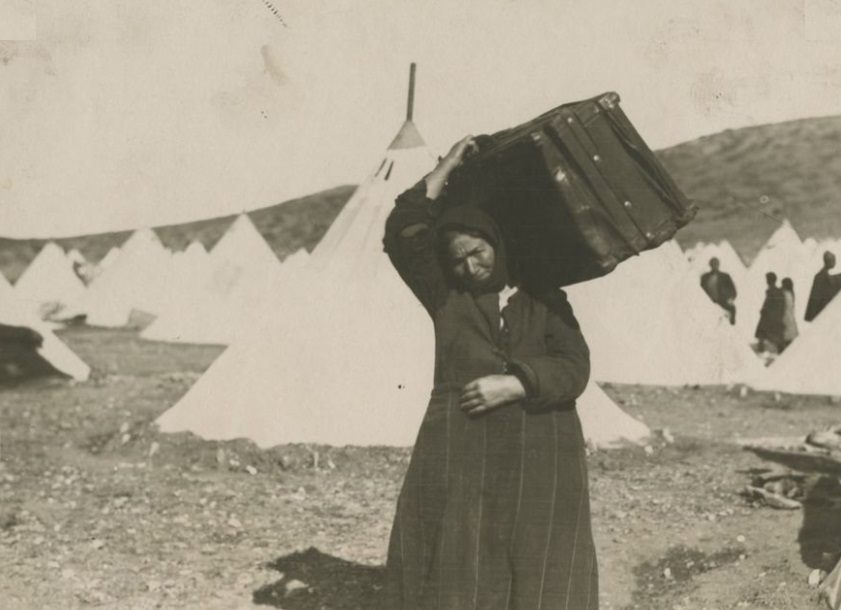
A woman with all her possessions on the island of Macronissi.
Source: Drexel University College of Medicine Archives & Special Collections.
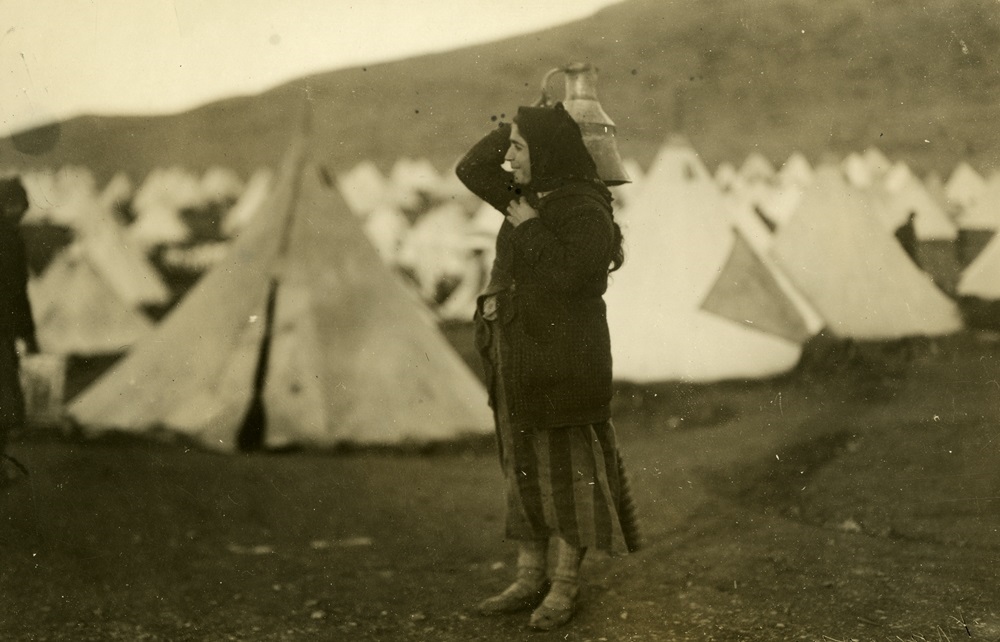
Macronissi Island AWH Quarantine Island.
Source: Source: Drexel University website.
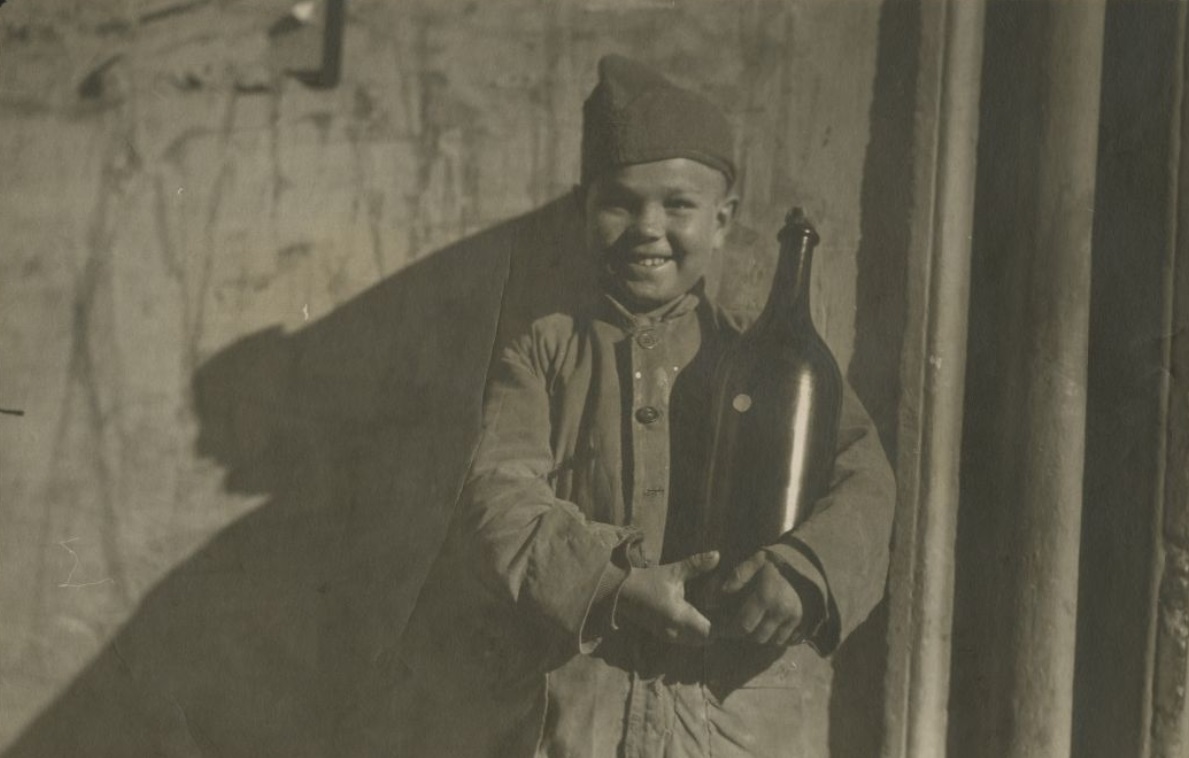
Small refugee at Macronissi with a bottle of water. Source: Drexel University website.



